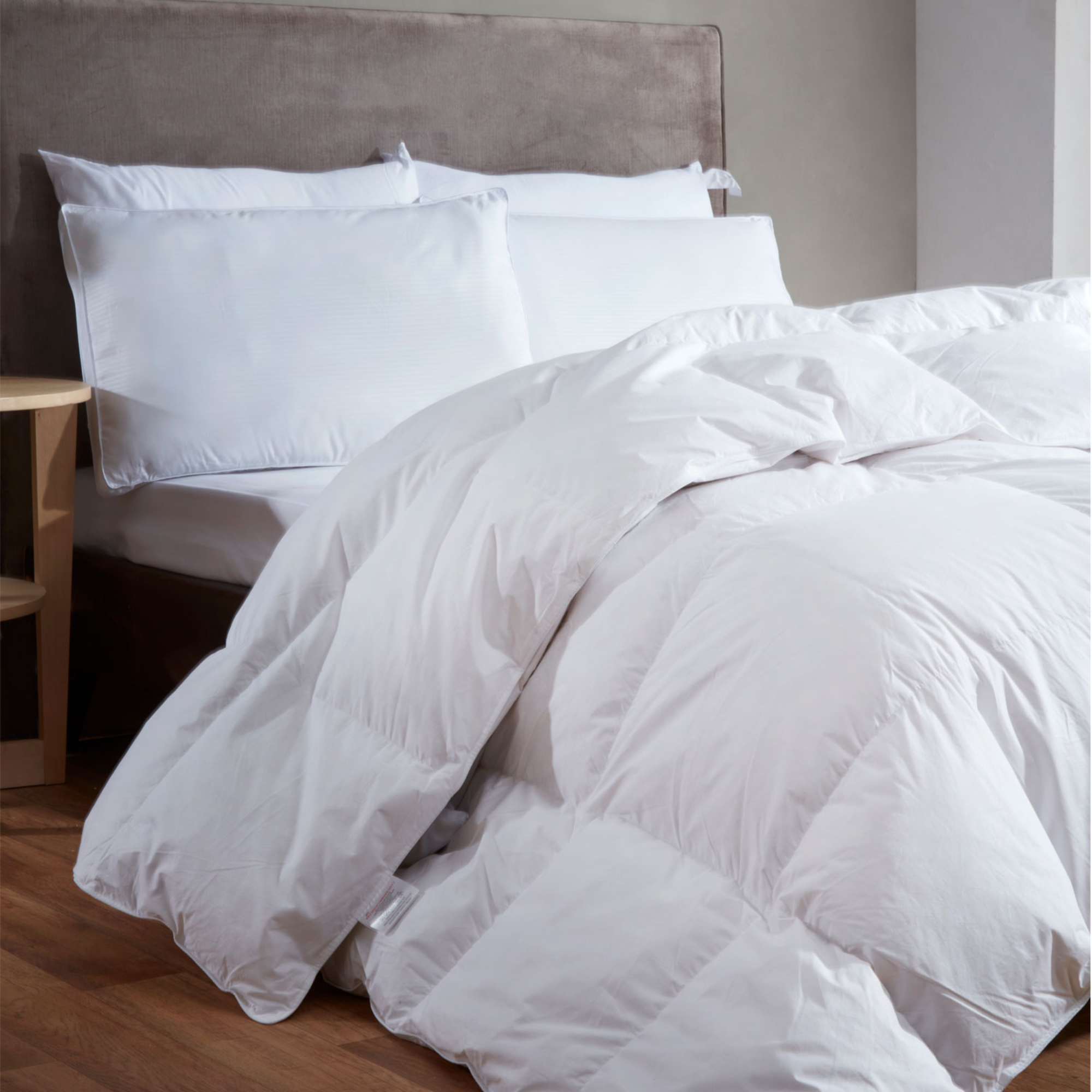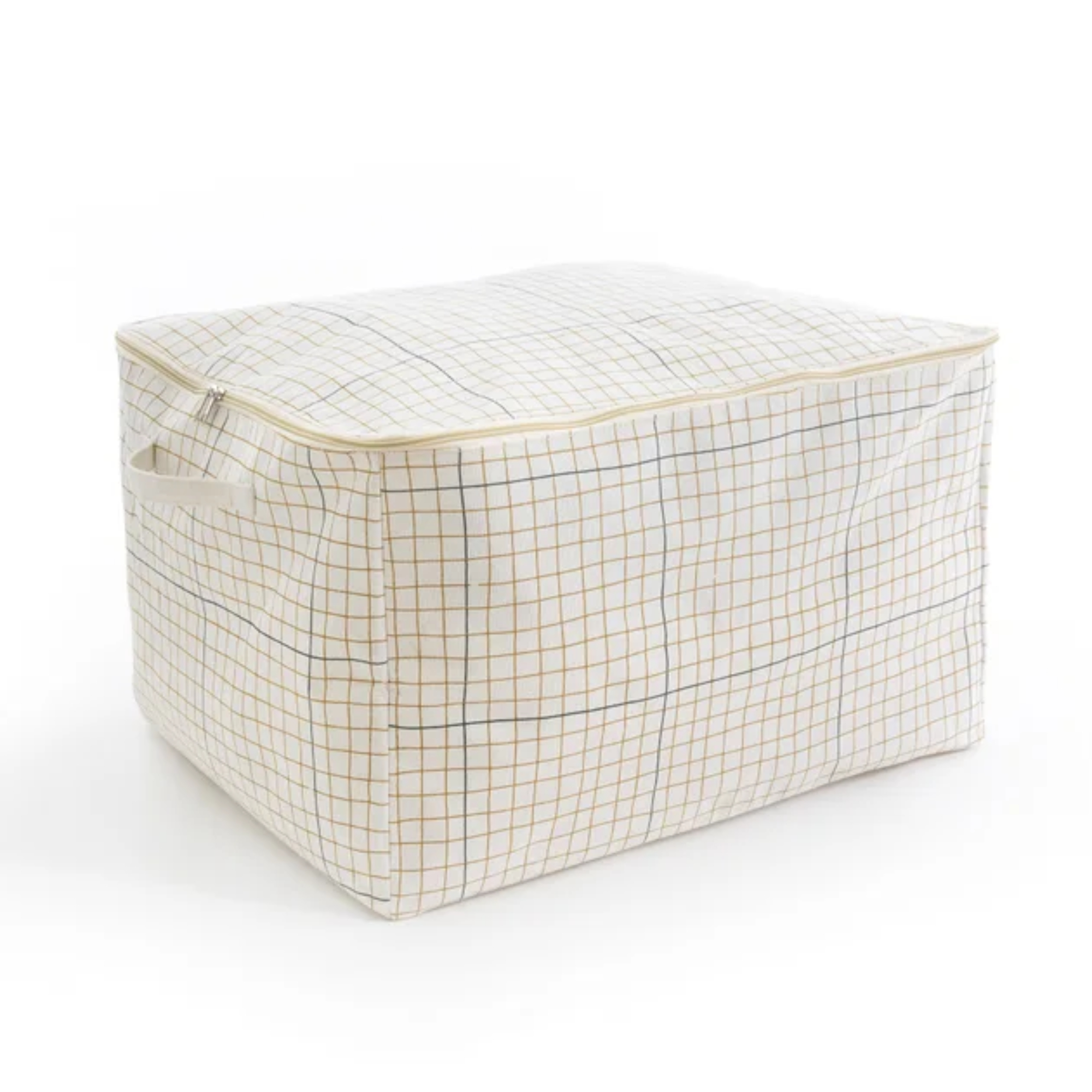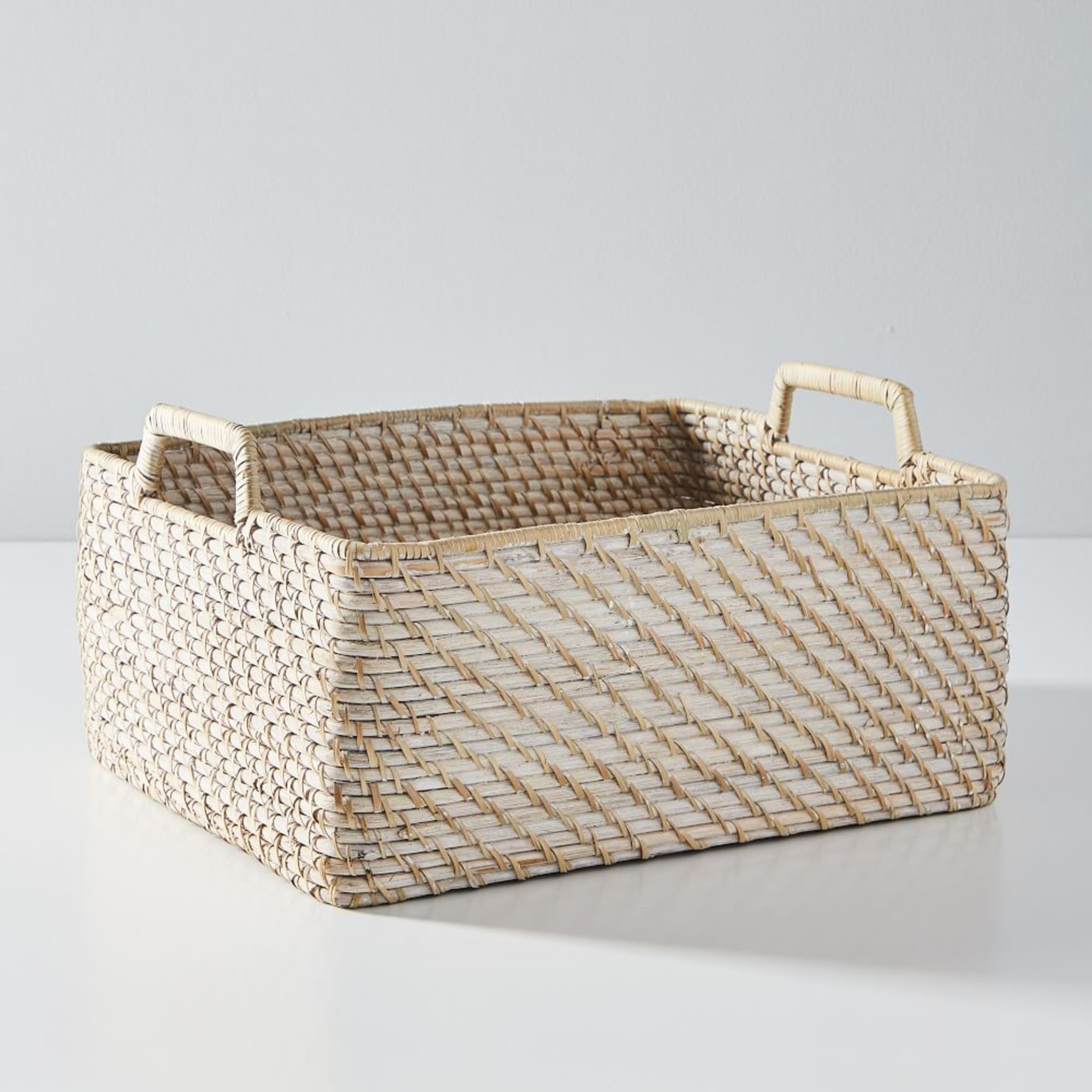This is the exact date to switch to your winter duvet
Wondering when to make the swap? Here’s when you should be switching to a winter duvet this year, according to the experts


As the evenings start to get that bit cooler you may have found yourself wondering when to switch out your lighter summer duvet for a heavier winter one. And you’re not the only one. But when should we be changing them over?
The best duvets help us regulate and maintain our body temperature throughout the night to get a restful night's sleep. But there's nothing worse than feeling too hot or too cold in the middle of the night. This is why having separate duvets for the warmer and chillier weather can help us to sleep better.
To ensure that you don’t bring your winter duvet out too early this year, we asked the experts to give their advice as to when the right time is to switch your duvet, as well as what you should do with your lighter duvet during the colder months.

Which date should you switch to your winter duvet this year?
While it can often be a personal decision as to when to make the changeover from one duvet to another, ‘generally, the recommendation is to switch to a winter duvet when temperatures are consistently at a high of below 15 degrees, and a low of below 10 degrees,’ says Carl Walsh, sleep expert and founder of Bed Guru.
Given how changeable the weather has been this year, it can be hard to predict exactly when it will get considerably cooler this year. But from monitoring the temperature trends for the last two years, ‘a significant temperature drop happened in the second week of October,’ explains James Higgins, CEO of Ethical Bedding.
Brian Dillon, interior expert at Crafted Beds concurs. ‘We tend to notice sales increasing for higher tog duvets around October time, as an industry.’ Most of the experts agree that October could be the best month to switch over from your summer duvet to your winter one. And because of this, the second weekend of the month, which will be Saturday, October 7, is when we’ll be changing to our winter duvet.

However, depending on where you live in the UK and some of the other factors that we’ve mentioned, you could also wait it out until nearer November.
Sign up to our newsletter for style inspiration, real homes, project and garden advice and shopping know-how
If you never seem to have enough time in the day, ‘the clocks changing is a good reminder that it is time to switch to a higher tog,’ says Silentnight’s sleep expert Sally Bonser. This occurs the last week of October.
While Piglet in Bed’s founder Jessica Hanley notes that they ‘averaged the last five years of data and saw that the best day to change your duvet tog was 16th November. This was the date from which the average temperature dropped below 10C for at least 30 days.’
Why should I switch to a heavier duvet in winter?

If your bedroom happens to get pretty chilly in the colder months, we have a feeling that you will already have invested in a dedicated duvet for winter. But if you haven’t already, here’s why you might want to make the swap sooner rather than later.
‘When winter rolls around, you might want a quilt that more effectively traps your body heat to keep you warmer,’ suggests James Higgins at Ethical Bedding. ‘Otherwise, you run the risk of suffering from shivering and broken sleep. What’s more, the psychological aspect of feeling snug and warm in bed can have positive effects on your mood and overall sleep experience.’
‘Winter duvets are also a worthwhile investment if you’re trying to save money on your heating. You can keep cosy at night without needing to turn up your heating,’ says Carl Walsh, sleep expert.
However, ‘those who live in higher floor apartments may want to keep a summer tog duvet all year around, as heat rising in their building may keep their home warmer in cold months. Equally, those suffering from hot sweats may not want to swap to a warmer duvet, so it’s important to remember that switching out your duvet is not essential,’ maintains Brian Dillon.
But if you tend to feel the cold during the winter months, which duvet tog is best?
Which tog is best for a winter duvet?

‘A tog rating is an indicator of how well the duvet will insulate heat. The higher the tog the thicker and heavier the duvet, and the better it is at insulating heat,’ says Carl.
While Kelly Collins, Swyft Home’s interior designer reveals that, ‘a duvet tog number is related to its warmth, not its weight, and depends on the duvet’s filling.’
So, you’ll want to consider a quilt that is at the warmer end of the scale during the colder months. ‘A thick duvet with a 13.5+ tog will offer ultimate heat retention during the long and chilly nights,’ affirms James. But ‘if you’re someone who prefers to keep things a little lighter, a winter duvet that’s 10.5 tog should also keep you comfortable.’
Carl concurs with this advice. ‘For winters in the UK, I’d recommend a 13.5 tog duvet; this will provide the extra warmth and insulation you need during the colder months,’ he adds.
How to store your lighter or summer duvet during the winter

When you’re ready to stow your summer duvet away until next year, there are a few considerations that you’ll want to make to ensure that it remains in tip top condition, according to the experts.
‘Many people believe that they should store all linens, including bedding and duvets, in the linen cupboard of their bathroom,’ suggests Rex Isap, CEO and sleep expert at Happy Beds. ‘However, this is the worst thing you can do. The cupboard can get extremely humid, causing mould and/or mildew to grow if left for long periods.’
You also need to be cautious of storing your lighter duvet away in a box or container of some kind. ‘If you’d like to store your bedding in a box of some sort, make sure it’s made of fabric or rattan and that it doesn’t have a lid,’ Rex outlines. Even if your duvet looks and feels completely dry, there will be some moisture within the fabric, ‘which when stored in an airtight container, can also cause mould or mildew.’

Storing your duvet in any form of plastic material can also run the risk of causing yellow stains on your duvet as these types of containers can ‘emit gases that seep into your bedding,’ he concludes. So, ‘avoid plastic bags or containers that can trap moisture and opt for breathable fabric storage bags or natural-material containers instead,’ James asserts.
And while you may be tempted to try vacuum sealing your duvet, Rachel Marshall, Brand Manager at Bensons for Beds warns against this. ‘While it can be tempting to give yourself the extra space they can actually create more problems by encouraging moisture and mildew.’ Having your duvet vacuum packed for a long period of time can also cause your duvet to lose its shape.
You want the container to be cool, dry and well-ventilated, such as these three great options.
You can keep them in a wardrobe to stop any dust from accumulating. Essentially, you’ll want to ‘choose somewhere that is damp and leak free to store the container for extra protection, so it’s ready to go for the summer season,’ says Brian.
And ‘try to keep your duvet in elevated storage and avoid storing on the floor or areas which are more prone to moisture,’ Rachel concludes.

FAQs
Should I wash my summer duvet before I store it away?
Even though we routinely wash our duvet covers, sheets and pillowcases, our duvets probably don’t get cleaned nearly as often. We know it can be a bit of a hassle to both clean and dry a duvet but ideally you should be washing your duvet every six months or so. This is why washing your duvet as you replace one with the other can be the ideal prompt to make sure that you actually remember to do so.
You may not realise it but our duvets ‘could be home to 20,000 dust mites,’ according to Rex. These tiny creatures feast on our dead skin cells and the bacteria that begins to accumulate and when you add sweat into the mix, which can soon build up during hot, clammy summer nights, our duvets aren’t quite as clean as they may appear just from looking at them.

Ellis Cochrane has been a Freelance Contributor for Ideal Home since 2023. Ellis has been writing about homes, interiors and gardens for four years now, with her also contributing to House Beautiful, Country Living, Expert Reviews, Real Homes and Stylist.


